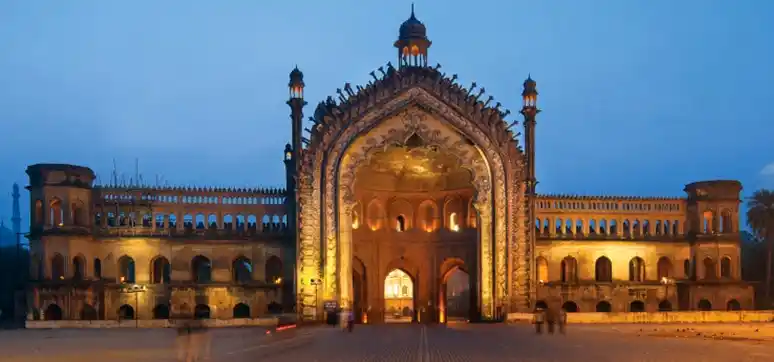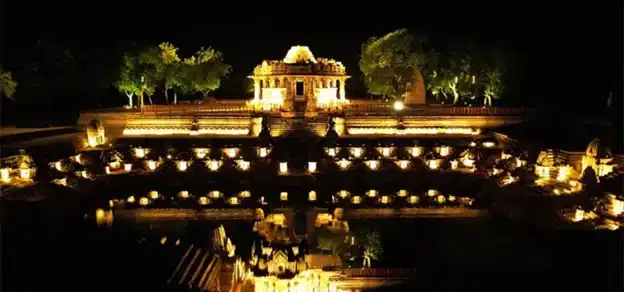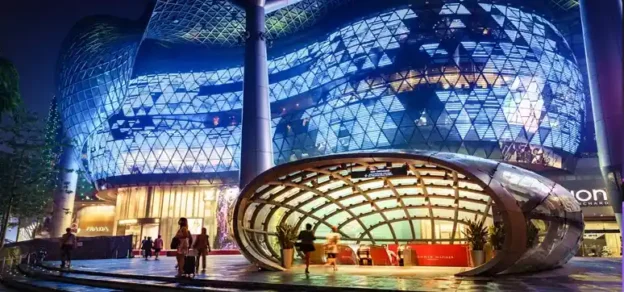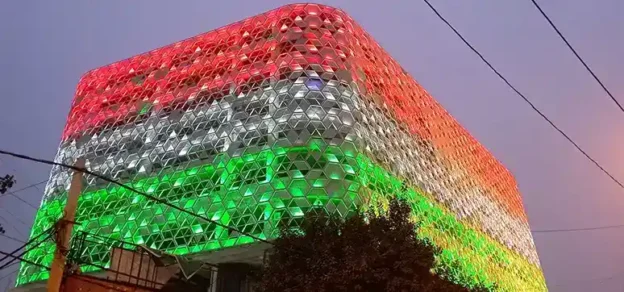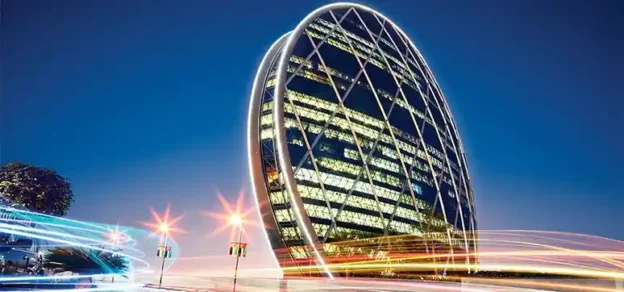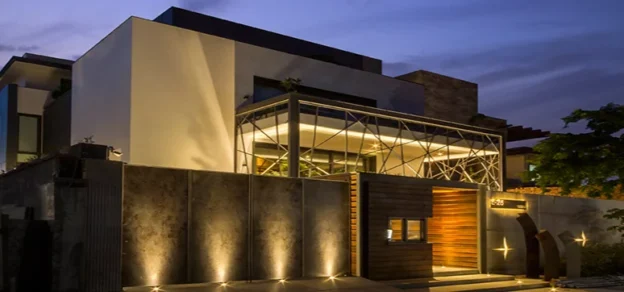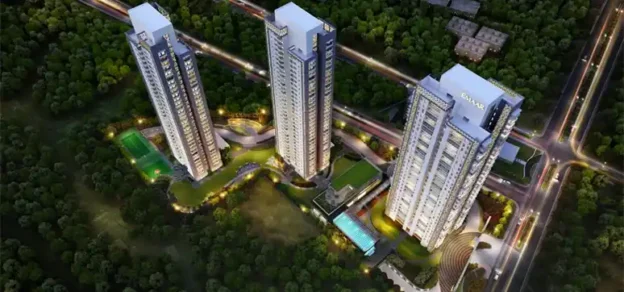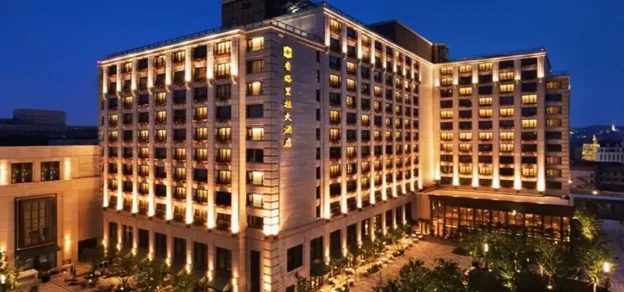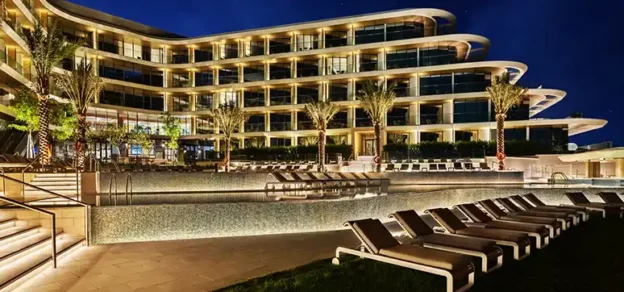Every structure has a story to tell, and it often begins with the façade of the building. To narrate this story effectively, it is very important to enhance the façade with an appropriate lighting design. A well-lit façade not only serves the purpose of being a landmark, or providing security, but also accentuates significant architectural details – imparting a character to the building as well as its surrounding. Today, effective façade lighting can be a means of conveying context-specific information or promulgating a message by narrating the story of the structure, the surroundings and the overall city, leaving a memorable impression on the viewer.
Since façade lighting plays a pivotal role in architectural expression, it is significant to devise a holistic façade lighting design scheme, bespoke for varied typologies. In order to design an ideal façade lighting scheme for any building, it is first and foremost very important to understand the intent of the façade and the building as a whole. Every structure would have a different intent, and message to give out, in which case it is the lighting designer’s responsibility to pick the right elements to highlight in a particular structure. Depending on whether it is a commercial, residential, hospitality, or heritage building, the intent of communication, as well as the elements to be highlighted would differ.

With automation being the future of the lighting industry, it is now widely used for façade lighting schemes as well. Depending upon the design in place, the lighting periods can be determined and controlled by the automation systems. Pre-programmed lighting scenes can be set up within these systems, which change with time, creating a dramatic effect and enhancing the storytelling experience through light. These control systems also save energy and enhance the efficiency of the luminaires used in the lighting scheme. Various methods can be used to illuminate façades depending on the conceptual focus and the typology of the structure that is to be illuminated, here are a few of them:
1. Wall Wash Effect
That method is generally used to illuminate flat façade surfaces with uniform lighting levels. It enables uniform illumination throughout the entire façade surface. Even with low illuminance levels on vertical surfaces, the wall wash effect makes the structure stands out from the peripherals and characterises the building. To achieve this effect, best-in-class spacing between luminaires should be maintained without compromising uniformity, which will lead to reducing the overall project cost.

2. Light Accent
This method is generally used to create contrast and emphasize important architectural details. The strong light and shadow contrast ratio helps accentuate important architectural details against the overall structure. In most cases, accent lighting is fused. In this method of lighting, generally, one fixture is used to highlight a single detail but with customised optics, a single fixture can easily illuminate multiple details.
3. Grazing Light Effect
This method is generally used to illuminate textured vertical surfaces to create interesting light and shadow patterns. In the Grazing Light Effect, the detailing of the textured surface interacts with light in such a manner that creates an interesting pattern by adding another dimension to the façade. Here, the light intensity at the source end surface is much greater than at the farther end, and the difference between these two decides the contrast level of the total vertical surface. Best-in-class spacing between two luminaires should be maintained in order to achieve the ideal result, which will lead to reducing the overall project cost.
4. Flood Lighting Effect
This method is used in scenarios where the intent is to illuminate a flat façade – economically. In the Flood Lighting Effect, the flat vertical surface gets illuminated by a floodlight projector kept at a certain distance from the wall so that the light beam can fall onto the entire surface, illuminating it uniformly, without casting shadows. The outcome of this is a flat and uniform illumination of the surface. Best-in-class spacing between two luminaires should be maintained to achieve this effect, this will lead to reducing the overall project cost. Flood Lighting is the most economical way of architectural lighting but has the downside of not being able to enhance the details with great precision.
5. Direct View Luminaire Lighting
This method is generally used to morph architecture, where the luminaire itself is a part of the design or effect to be created on the façade. This method of lighting creates low-resolution pixel matrices to achieve dynamic effects on a massive scale, morphing architecture through lighting control. Whether it is a continuous linear line on the building crown, or shimmering lighting dots on the façade, this lighting method with an advanced control system makes the outstanding effect a possibility.
A well-illuminated façade helps in establishing the character of the surrounding space and also helps in building the cityscape. Illuminating façades enhances overall security, makes spatial orientation easier, and also discourages vandalism. It emboldens the structure and adds a new definition to it, by giving it a well-defined voice to narrate the story of the building efficiently and effectively through lighting.
A HERITAGE BUILDING Rumi Gate, Lucknow, Uttar Pradesh

Constructed in the 1780s, ‘The Turkish Gate of Lucknow,’ popularly known as Rumi Gate, stands 60 feet tall between the Chota and Bada Imambara, becoming a recognised landmark of Lucknow. The front of this fascinating gate has three distinct doorways, which turn into a single seamless giant façade, while the same three doorways add an element of surprise to the structure when viewed from the rear side.
A Heritage structure like Rumi Gate boldly marks national pride and has witnessed several freedom struggles, permitting a different approach to lighting. The design intent was to highlight the intricate details, like the numerous arches of varying scales and the intrados of the dome, in such a way that a viewer would be compelled to take a journey back in time and have a rich experience of the story being narrated through light.
The ASI-protected structure did not allow an incursion into the structured fabric, marking the urgency of using standalone lighting fixtures that would be directly aimed at the application. To meet the purpose, luminaires by Lumenpulse and Lec were used for the façade lighting application. The précised lensed exterior products not only helped to achieve the required lighting effect but also fulfilled the special lighting requirements by playing with tones of whites, adding a colour-changing element to the design.

The fixtures were directed to accent the architectural details of the structure, giving it a far better-lit effect than conventional lighting. The total energy consumption was brought down to 1/3rd with the use of quality products, thus saving energy and maintenance costs. Furthermore, the fixtures were mounted without drilling into the building or fixing visible control boxes, which was important to maintain the architectural integrity of the building.
• Project: Rumi Gate
• Location: Lucknow, India
• Client: LDA
• Lighting designer: Archohm Consultants
• Architect: Archohm Consultants
• Products used for façade: Lumenpulse and Lec Lyon
• Completion Date: December 2017
Accentuating Spiritual Aura Taj Rishikesh

The holy city of Rishikesh, at the base of the Himalayas, holds deep cultural and spiritual significance for local Hindus. Blessed by the mighty Ganges and guarded by the formidable Himalayas, Taj Rishikesh is located in a quiet village called Singthali, conceived as an elegant nest. The stunning location and provincial charm make it a natural habitat for wellness and serenity to take residence.
The lighting design intent of the project involved illuminating the rooms, waterbody and public areas to accentuate the sacred and spiritual aura of the space. The design is deeply influenced by the characteristics of the river Ganga – sensitivity, calmness, energy, generosity and strength. To achieve the design ideation, luminaires from the brand Litolux were used. The lighting involved rendering the design using lights of different colour temperatures that best suit the function and add an edge to the space.

QUICK FACTS:
• Project: Taj Rishikesh
• Location: Rishikesh, Uttarakhand, India
• Client: Taj Rishikesh
• Lighting designer: Kiran Ganti
• Architect: Edifice
• Products used for facade: Litolux
• Commencement Date: April 2011
• Completion Date: Sept 2019
